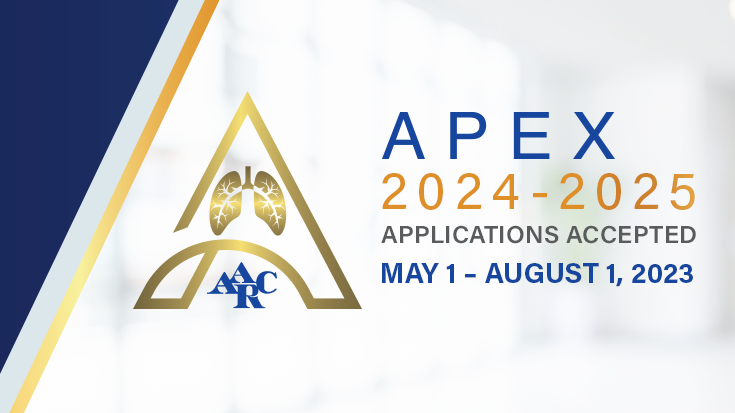
Recruiting top talent has always been a key focus point for respiratory care leaders. Prior to COVID-19, the U.S. Bureau of Labor Statistics projected a 23% increase in demand for respiratory therapists by 2030.1 Unfortunately, the number of new graduates is being outpaced by those retiring. According to the 2020 AARC Human Resource Study, approximately 92,000 RTs are expected to leave the profession by 2030.2 At the same time, CoARC has reported a 27% reduction in RT program enrollment since 2010, with only 10% of schools at capacity.3
This staffing shortfall has been transformed into a crisis as COVID-19 continues to surge across the county. Respiratory therapists are tired, often overwhelmed, and experiencing burnout due to the crush of patients they continue to see. Miller et al. found that high workloads and insufficient staffing are two of the top drivers for burnout among respiratory therapists.4
In addition to the large increase in the volume of patients RTs are caring for, a number of therapists have retired early or simply left the profession. Other therapists have left their organizations for extremely lucrative temporary positions with travel agencies, leaving behind even greater staffing challenges.
In the best of times, recruiting respiratory therapists has been a challenge. As we continue to navigate the pandemic, the demand for RTs has increased substantially, turning our talent gap into a chasm. Respiratory care leaders are faced with a new challenge associated with a not so new problem:
How do you recruit top talent during a pandemic?
Traditional strategies may not be enough in today’s current health care climate. To be competitive, leaders need to be at the top of their recruitment game, employing innovative and creative strategies to attract new hires. Things to consider for recruiting new staff:
Is your compensation competitive?
- When was the last time your organization conducted a market assessment for RT salary/wages? Assessment of your pay range has always been vital to remaining competitive in your market, but in the current environment, being even a little bit behind the local market can have a significant impact on your ability to onboard new staff.
- Many organizations are offering sign-on bonuses to attract new hires. These vary by region and range anywhere from $1,000 to over $30,000 with a 1-2-year commitment. Sign-on bonuses should not be a replacement for market competitive wages; RTs are savvy job seekers and can do the math.
- Other financial incentives to consider are referral bonus programs (what’s better than having your own staff recruit?) and retention bonus programs to keep your talent in the organization.
- While organizations cannot fall behind the market in compensation, offering excellent wages and great benefit packages alone are not sufficient in the competitive health care job market.
Enhance your relationship with local schools
- With many RT schools below capacity, fewer new graduates are entering the field each year, making the competition for their first job much higher. As a leader, it is ideal to ensure you have a good relationship with local schools to attract more new graduates into your department.
Recruit from within
- Have you considered recruiting from medical assistants, nursing assistants, equipment services, or other teams in your organization? Utilizing tuition assistance programs to support their enrollment in a respiratory program isn’t a quick fix but can build pipelines to address staffing needs in the long term. Hosting onsite information sessions in collaboration with local programs may boost interest.
Assess how and where you market open positions
- Some recruiting teams fall into the groove of using just one or two recruitment channels. While these may have been successful in the past, diversifying where you post open positions can help you find more candidates. Pay special attention to social media and job posting sites where RTs are likely to start their job search.
- With so many RT departments posting open positions, your posting could end up pages deep on a hiring website. You may consider sponsored postings, advertising with the AARC and state affiliates, or at your local RT conference to be “seen.”
- What makes your position posting stand out? Many postings look the same; they all have a job description and basic qualifications for the role. This is typically required, but you should also consider adding details about your team or organization. Why should the RT choose YOUR ORGANIZATION? What makes your team different?
What benefits do you offer your team?
- This is about much more than medical benefits. As RT leaders, “traditional” benefits such as medical, dental, and retirement packages are likely out of your scope of influence (though we should be advocating for strong benefits packages to enhance recruiting and retention). There are many other benefits we can, and should, offer that both support RTs and can improve patient care. This includes autonomous decision-making through protocols, formal recognition programs, and shared governance. Not unlike other health care professionals, RTs flourish when provided growth and development opportunities. This includes education and training, as well as promotion through clinical ladder programs.
What are you doing to support the team through this staffing crisis?
- Respiratory therapists face high levels of stress. This has intensified with the pandemic. A focus on the prevention and reduction of burnout is vital. Offering wellness programs to assist employees in coping with the stressors of their jobs is not only attractive to potential staff but supports retention. Job candidates are paying attention to what organizations have done and continue to do to support their staff throughout COVID-19. Many of them see this as an indicator of how much a team is valued.
- Consider flexible staffing options such as self-scheduling and more control over time off. In addition, flexible shifts or part-time positions may be seen as attractive to some candidates.
Move quickly and efficiently
- Candidates may be considering more than one offer, so making timely decisions, and communicating with the candidate, will lessen the risk they will accept employment elsewhere. How quickly should you be prepared to move? This depends on the role and how soon you need to fill the position. Some hospitals have moved to same-day offers for urgent roles to reduce fill times.
- Be efficient when hiring. Interviews can take place in person or via technology. Virtual interviews may be desired for many reasons, including out-of-town candidates or those trying to balance childcare on their day off from their current position.
Create an official retention plan
- RT leaders cannot overlook the importance of retention. After you find the ideal candidate for your team, you need a plan in place for retaining them. Health care professionals, including RTs, appreciate ongoing development, regular feedback, clear policies and procedures, and opportunities to have their opinions heard. Leaders may consider conducting stay interviews or group sessions to learn what people love about working at their organization and what can be improved. This could be the basis of your unique retention plan.
Out with the old, in with the new
Gaps in the RT workforce are not new, but the COVID-19 pandemic has pushed many teams to the edge, making recruitment and retention more important than ever. The “old” methods of recruiting and retaining staff are much less effective. Now is the time to be innovative, identifying new and creative methods to support and expand our teams.
Do you have creative ideas? Please share them on AARConnect!
References
- Bureau of Labor Statistics, U.S. Department of Labor, Occupational Outlook Handbook, Respiratory Therapists, at https://www.bls.gov/ooh/healthcare/respiratory-therapists.htm (visited 9/10/21).
- 2020 American Association for Respiratory Care Human Resource Study.
- Commission for the Accreditation for Respiratory Care (CoARC). 2020 Report on Accreditation in Respiratory Care.
- Miller AG, Roberts KJ, Smith BJ, Hinkson C, Hoerr C, Rehder KJ, Strickland S. Prevalence of burnout among respiratory therapists amidst the COVID-19 pandemic. Resp Care 2021;66(suppl 10).
Email newsroom@aarc.org with questions or comments, we’d love to hear from you.


















